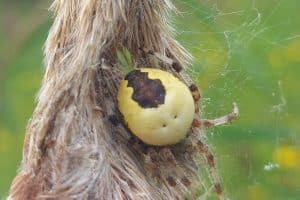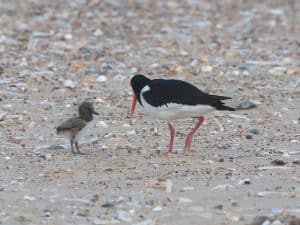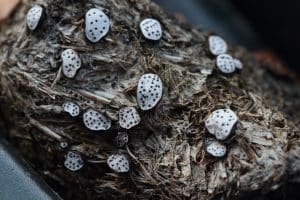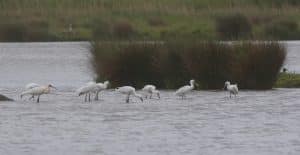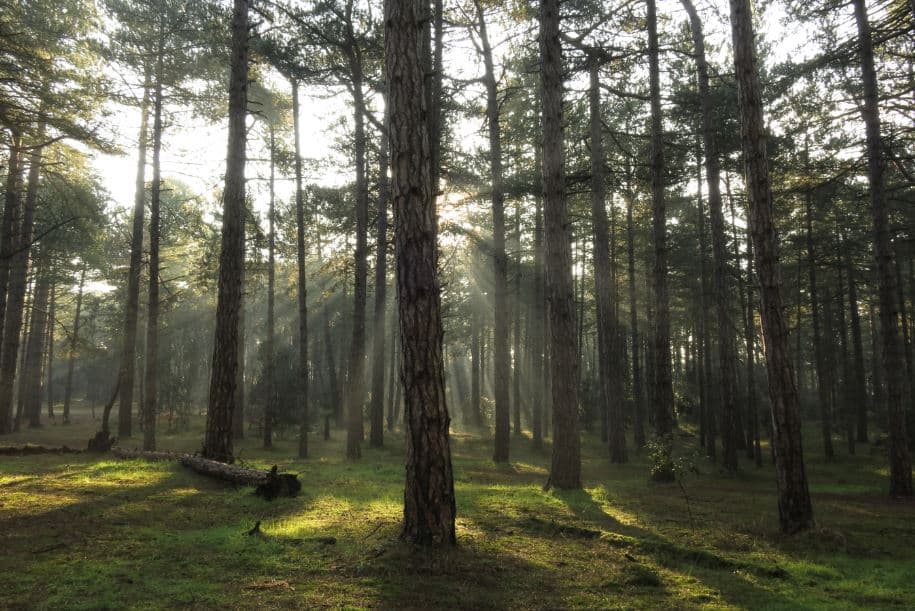
Bringing Life Back into the Pinewoods
September 20, 2018 | Nature news | 10 minute read

Wells Pinewoods in their spring time splendour
One of the major landscape features of the nature reserve is the three mile length of pinewoods stretching from Wells through to Holkham. It has become an iconic land mark along the coast visible from air, land and sea. Whilst the ambience and pastimes of the woods are loved and enshrined in the memories of locals and visitors alike, their actual ‘natural’ value through the eyes of some scientists and naturalists is rather less favourable. Conifer plantations and southern English lowland pinewoods never have the levels of diversity that mixed or deciduous woodland offer and with our woods planted on an ancient sand dune system (an infinitely more precious and scarce habitat in the UK) some scientists in the past have even advised that the pinewoods should be cut down! For those of us who regularly visit or work within these woods, this would be a quite horrific thought; a complete travesty both from an aesthetic view and a crime against the wildlife. Indeed Holkham’s pinewoods have a long and intriguing history and are actually home to some quite amazing wildlife in need of preserving. What we do realise is that some management work does need to occur. In the past this has been minimal and we are now at the stage where work is essential for us to retain – and enhance – the diversity of the wood and ultimately preserve its longevity.
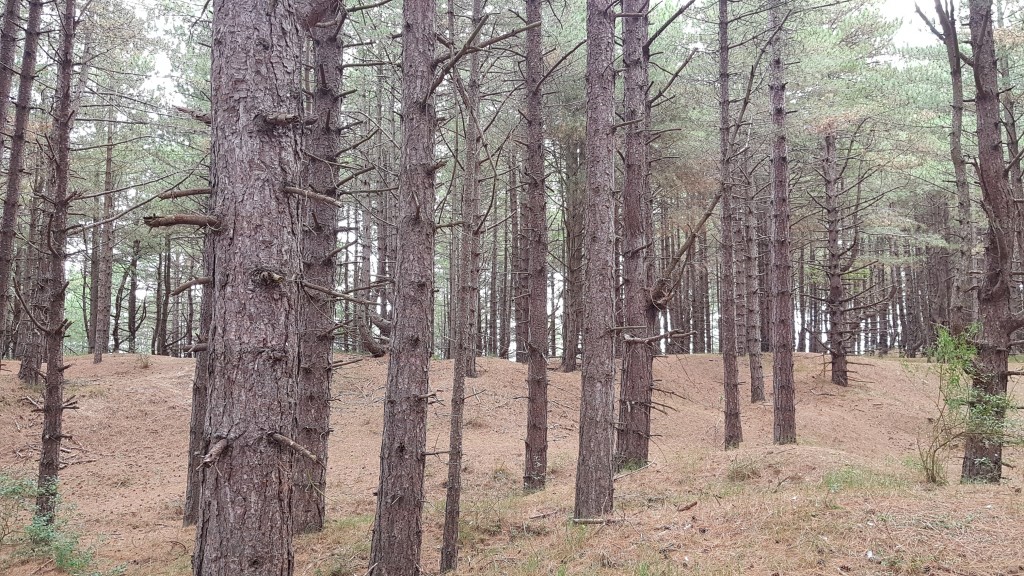
The unremarkable uniformity of the pinewoods interior
In the last six years the reserve team has been doing scrub clearance and selective thinning along the southern edge of the wood to allow more sunlight to penetrate and give us more chance of welcoming ground flora and the spread of the existing deciduous trees and ultimately greater bio-diversity. This year the Estate aims to up the ante somewhat by moving into the older, taller and more densely packed pine trees at the western end of the wood. A careful plan will be followed devised by the Forestry team aided with our knowledge of the flora and fauna and their requirements. The work is set to be carried out in stages over the next few years (commencing this autumn) and in such a way to minimize environmental impact yet to create extra glades, clearings and more of an open canopy thus allowing greater regeneration and colonization opportunities for plants and invertebrates that would otherwise struggle to exist. Clear felling will certainly not be occurring just selective thinning in small blocks spread out through the wood thus giving us more age structure in a wood that has up to now been quite uniform.
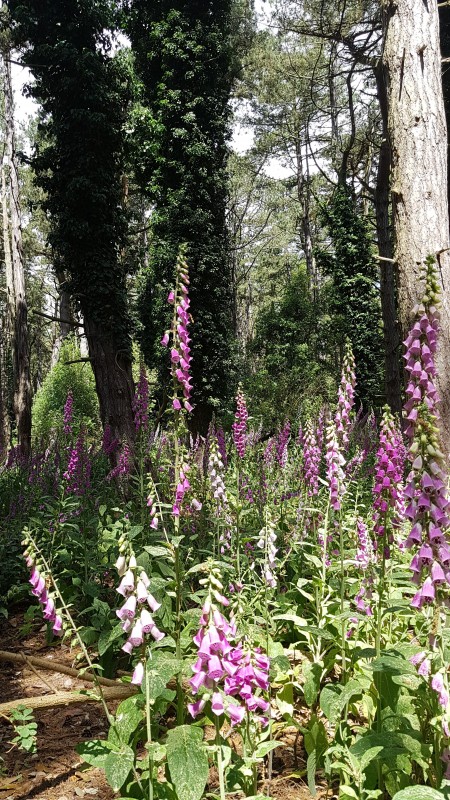
Foxgloves growing in an open glade in Holkham Pinewoods
For the intricacies and value of the pinewoods to be fully understood, a little bit of background information is required both on the site’s history and the species that we attract. Looking back to the early 1800s the site of the pinewoods was then a prominent sand dune ridge much like Scolt Head and Burnham Overy to this day. The area had already started to change dramatically when a programme of reclamation work started back in 1639 and the first sea wall was built at Burnham Overy. Sea water was starved from the old tidal creek systems and the transition from salt marsh to brackish and then fresh water marshes began.
By the time of the building of the last sea wall in the Holkham area at Wells in 1859, many of the former marshes had already started to be farmed with arable crops alongside widespread sheep grazing. To maximize such an opportunity it became an essential necessity to provide a similar amount of protection to the north of the current marshes as there was to the east and west from the respective sea walls at Wells and Overy Staithe. The answer was already there in the sand dunes, but the very nature of these is that they are constantly in a state of flux, building up one year and becoming eroded and disappearing the next. It is true that when they become established older ‘grey’ dunes they are more stable yet the risk from tidal surges and flooding is never far away.
By planting the dunes with the pine trees between 1853 and 1891, not only did they eventually become more permanently stabilized but the barrier the woods created also stopped vast quantities of sand from blowing inland onto the cropped fields. This has not always worked of course as the floods of 1953 and 1978 both swept into various parts of the woods, killing off many trees in the process. As with most woods in their infancy it was not only the trees that were planted (predominantly Corsican Pine but also Austrian, Maritime, Monterrey and Scots) that became established but also natural colonists too.
One major feature of the wood is the mixed component of deciduous trees that skirt the southern edge and penetrate into the interior where lighting conditions and space have allowed. Varying numbers of Oak, Birch, Sycamore, Willow, and even Elm sit alongside a scrubbier component of Hawthorn, Bramble, Elder and Spindle. More unwelcome has been the spread of the evergreen Holm Oak. This Mediterranean species is quite synonymous with the Holkham area, planted widely from the 1700s when acorns were collected from the foliage that helped pack many of Holkham Hall’s collection of shipped European statues and paintings.
In recent years the amount of ground this tree has started to naturally colonize is quite startling. Left unchecked it grows freely along the remaining sand dunes, creates a dense, dark under-storey in the older pine trees and also takes over any space where slower growing trees such as Oaks are establishing. It has been predicted that if no intervention occurred, the pinewoods we know today would in the future be nothing more than a dune ridge of Holm Oaks with no other flora or fauna living under or in it such is their effectiveness for surviving and denying any light through the canopy.
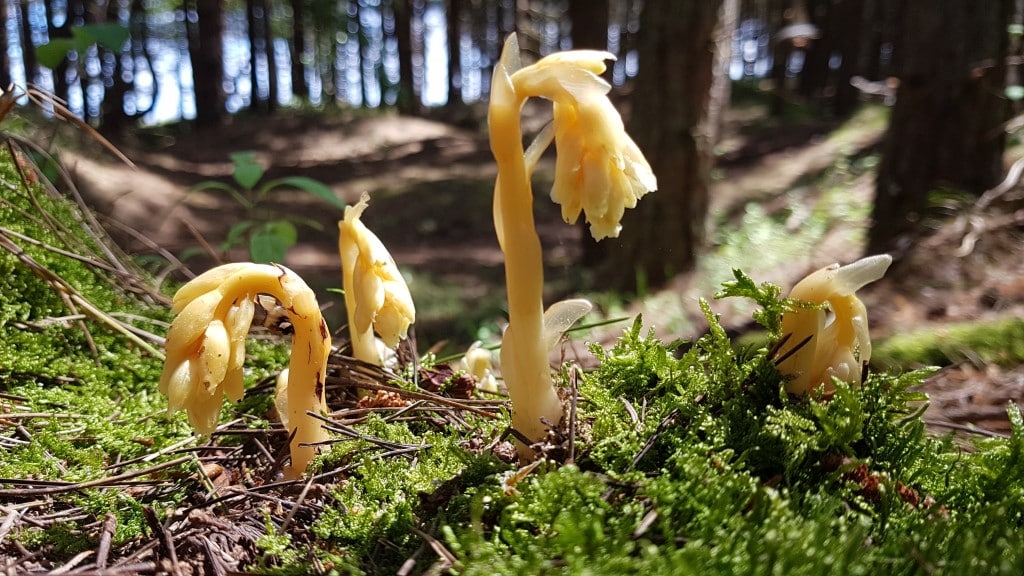
Yellow Bird’s-nest, one of our more unusual plants of the pinewoods
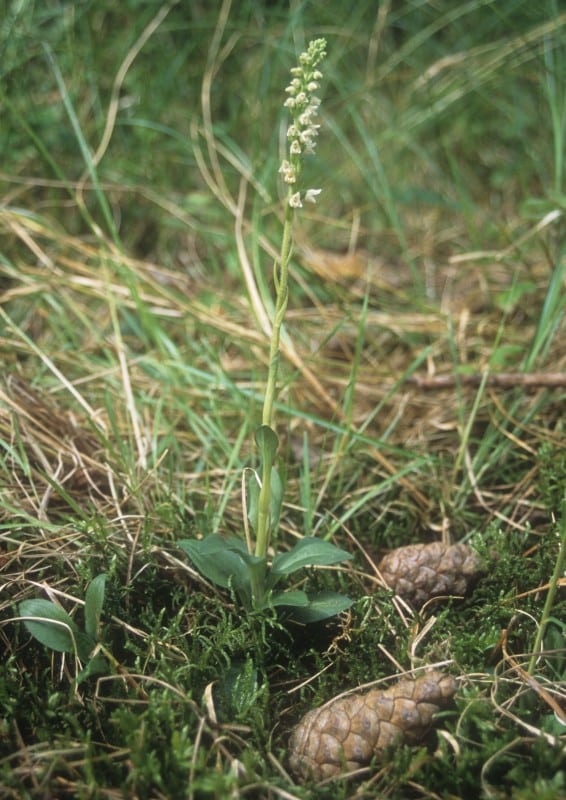
Creeping Ladies Tresses, nowadays a very rare orchid of the woods
The mix of conifer and deciduous trees on this sandy coastal site is really what has combined to create the wood we know today and also given it far more life than might be expected on a similar site inland. Whilst the actual flora within the woods is quite limited we do have specialities. Diminutive pink Heath Speedwell punctuate rather sparsely the old dune ridges of the interior whilst at the other end in scale, tall and vibrant Foxgloves crowd into the more open glades.
More unusual are tiny white orchids, Creeping Ladies Tresses, a rather cosmopolitan species of cooler mountain conifer woods from the Himalayas to North America. More frequent in Scotland, their numbers have dropped in England so much that we are now one of the few remaining sites. Preferring more shady dappled sites with an abundance of moss, they can often be found growing alongside Yellow Bird’s-nest, another rarity. Lacking chlorophyll it is pale and fungi-like and grows on dense patches of pine needles where it parasitizes a fungus that in turn is growing on the pine needles.
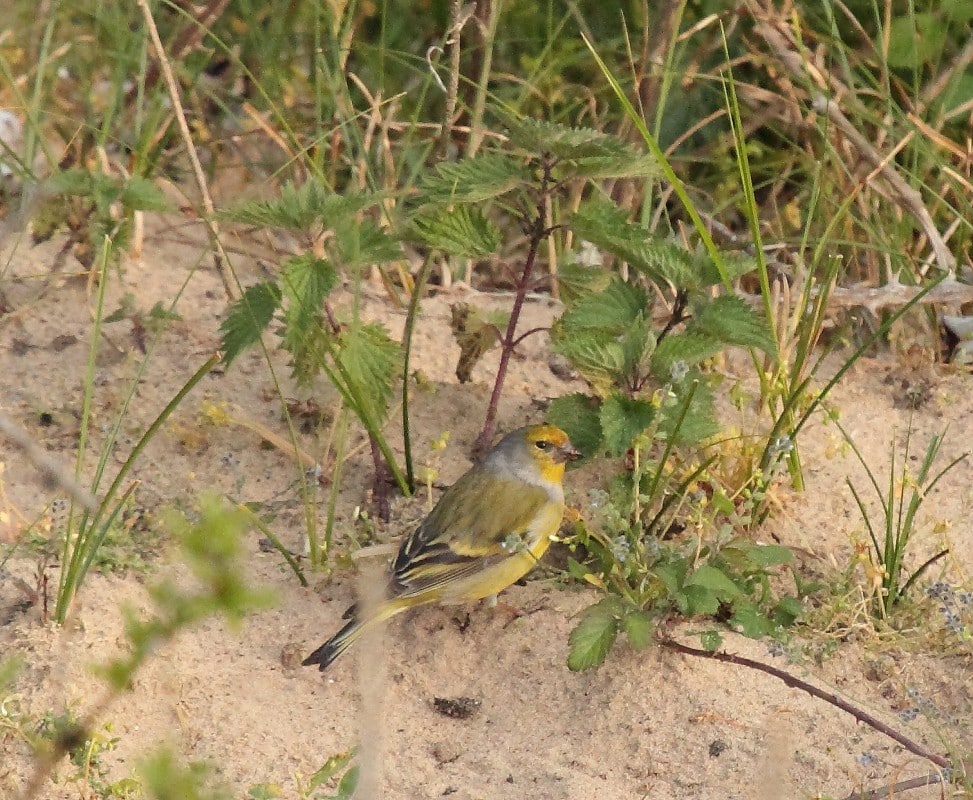
The Citril Finch of 2015, a rarity of Alpine pine forests
The pinewoods are always at the forefront for attracting new insect colonists and migrant birds grateful of food and shelter after an arduous sea crossing. Pick the right day in the autumn and the woods can be alive with migrant songbirds such as various thrushes, finches and warblers from all over Europe and even beyond. One small pine-loving bird, the Red-breasted Nuthatch, a species barely the size of a Blue Tit flew all the way from the forests of Canada to spend the winter here in 1989/90. It had never been seen in the UK before or since!
From different parts of Europe came a lone Citril Finch (an alpine pine specialist) in 2015 (only seen once before in the UK) and some Parrot Crossbills from the upland forests of Scandinavia. These hefty billed finches that specialize in ripping cones apart to eat their seeds really made history as they nested for the first time ever in the UK at Wells in 1984 and 1985. Specialised insects such as Ant-lions, Red Longhorn Beetles and Red-necked Footman moths to name but a few live in and around our mature pines.
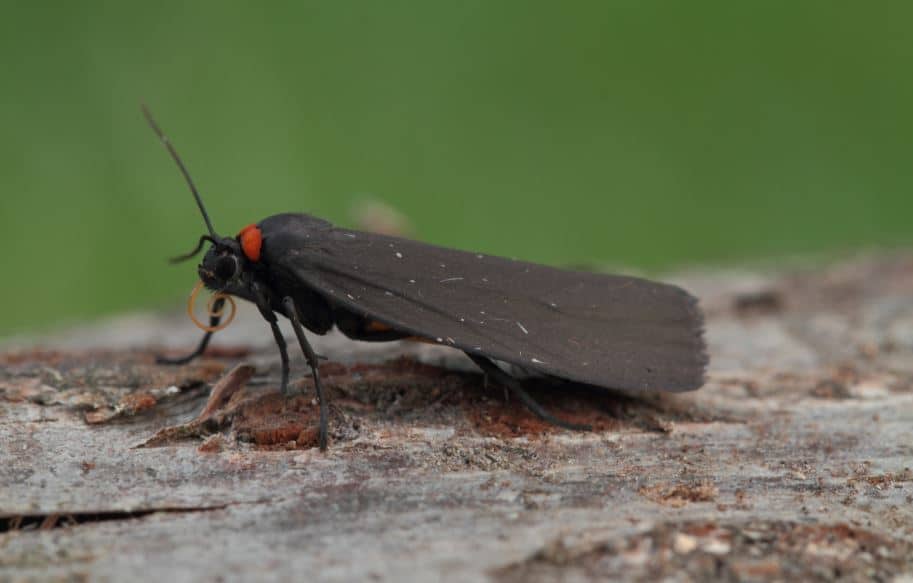
The Red-necked Footman a scarce moth of the pinewoods
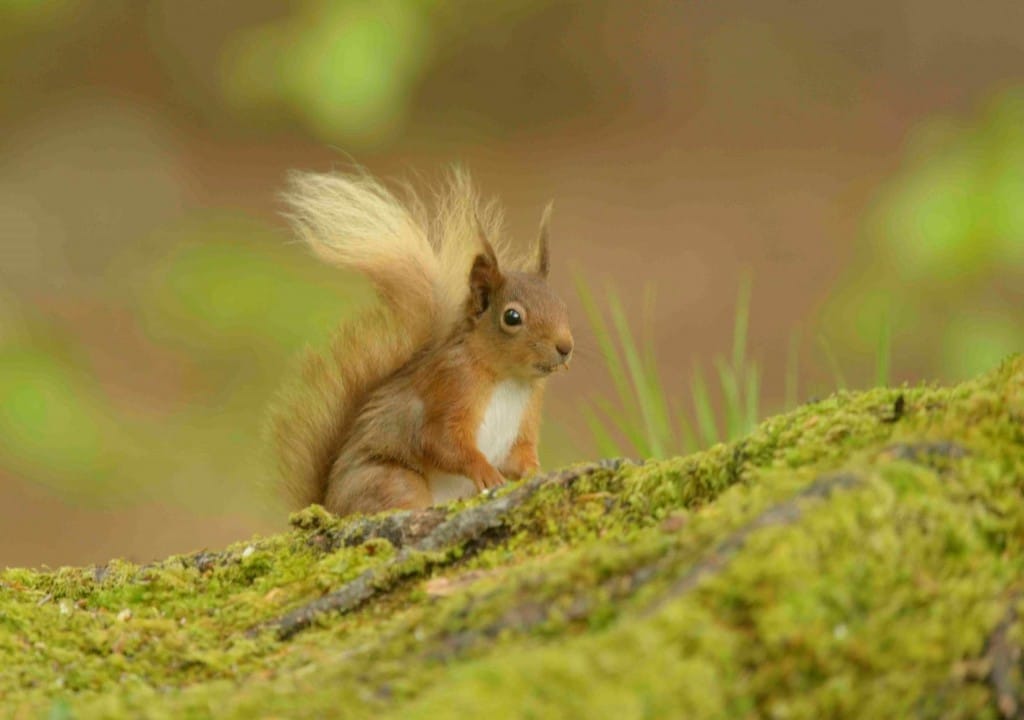
Red Squirrel, extinct at Holkham since the late 1980s
In the past, however, there was one animal that really epitomised the wildlife of the pinewoods. Jumping from tree to tree, nibbling at cones and nipping off the shoots of the neighbouring deciduous trees before disappearing sprite-like into the depths of the denser pine canopies. The Red Squirrel and its character seemed to match perfectly the changing moods of light and shade so typical of the woods. Yet sadly it is no more.
For a species once so plentiful, its demise and local extinction seemed to come all too quickly. Unable to survive the diseases brought upon it by the far more aggressive introduced Grey Squirrel it died out, last seen with certainty on the reserve in 1987. One very sick individual clung onto life in Holkham Park until 1989. Plans are very much in their infancy, yet it is hoped that one day Red Squirrels might return here with help from a re-introduction scheme. It will take a bold and dedicated plan for that to happen but how great would that be to see these characterful rodents of the woods to regain their rightful place in the ecosystem? With the woodland work that is about to take place we are at least making a start in preserving the right habitat for all manner of life on the reserve and who knows what that might be in the future ?
Andy Bloomfield, Warden Holkham NNR
View all latest blog posts here.
Back to Journal Back to JournalRelated journals
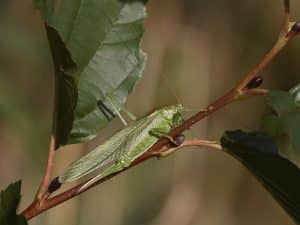
Conservation conversations: October 2025 on the Holkham National Nature Reserve
Nature news
Read more